How an Electrical Engineer Solved Australia’s Most Famous Cold Case
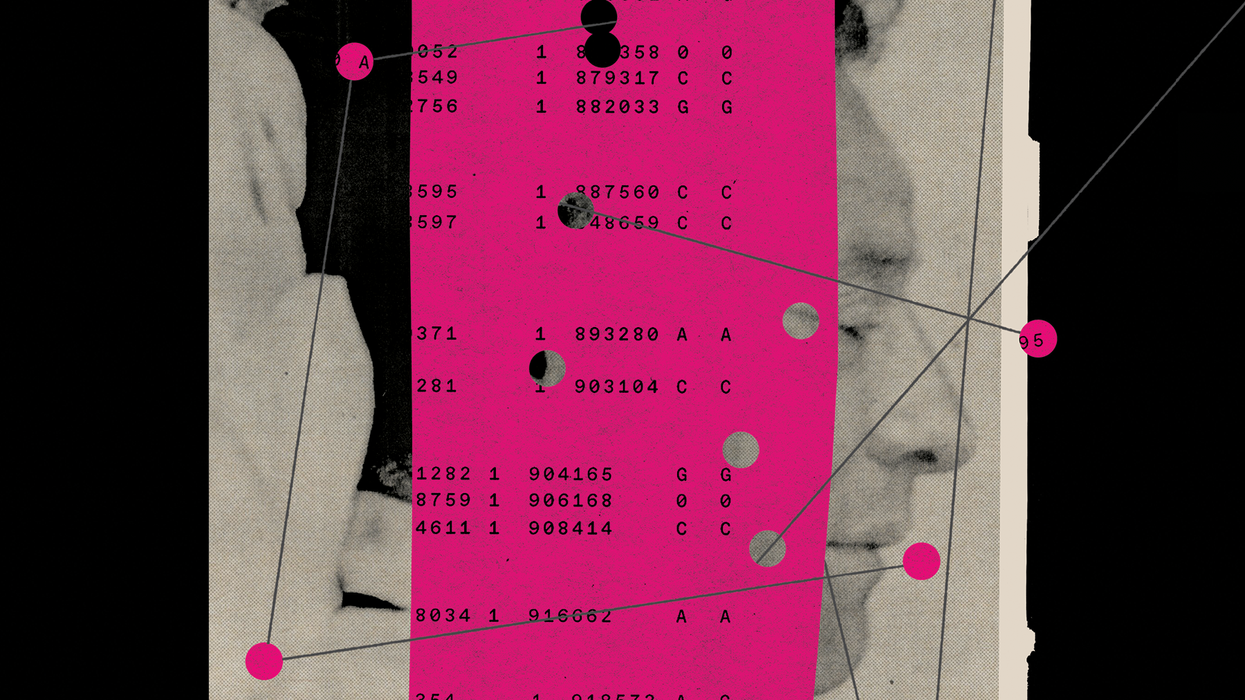
Dead, and in a jacket and tie. That's how he was on 1 December 1948, when two men found him slumped against a retaining wall on the beach at Somerton, a suburb of Adelaide, Australia.
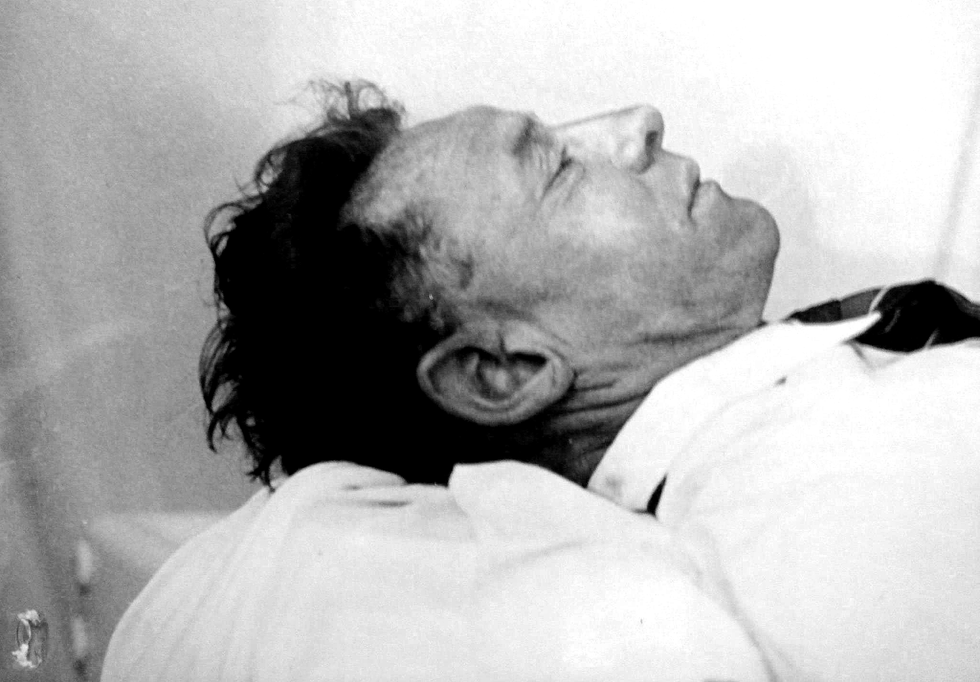 The Somerton Man's body was found on a beach in 1948. Nobody came forward to identify him.JAMES DURHAM
The Somerton Man's body was found on a beach in 1948. Nobody came forward to identify him.JAMES DURHAM
Police distributed a photograph, but no one came forward to claim the body. Eyewitnesses reported having seen the man, whom the newspapers dubbed the Somerton Man and who appeared to be in his early 40s, lying on the beach earlier, perhaps at one point moving his arm, and they had concluded that he was drunk. The place of death led the police to treat the case as a suicide, despite the apparent lack of a suicide note. The presence of blood in the stomach, a common consequence of poisoning, was noted at the autopsy. Several chemical assays failed to identify any poison; granted, the methods of the day were not up to the task.
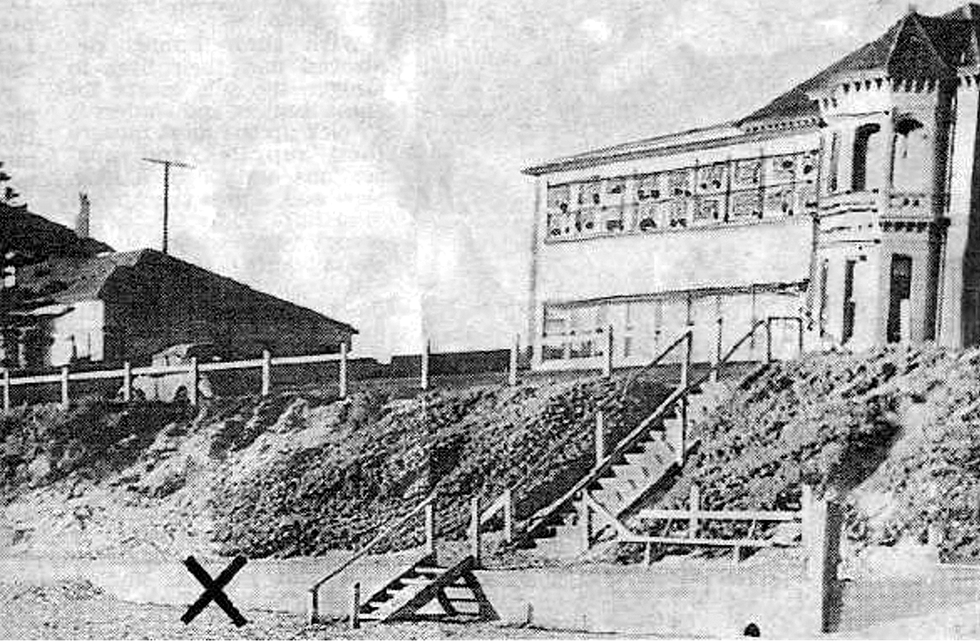 The place on Somerton Beach where the man was found dead is marked with an X.NEWS CORP./ALAMY
The place on Somerton Beach where the man was found dead is marked with an X.NEWS CORP./ALAMY
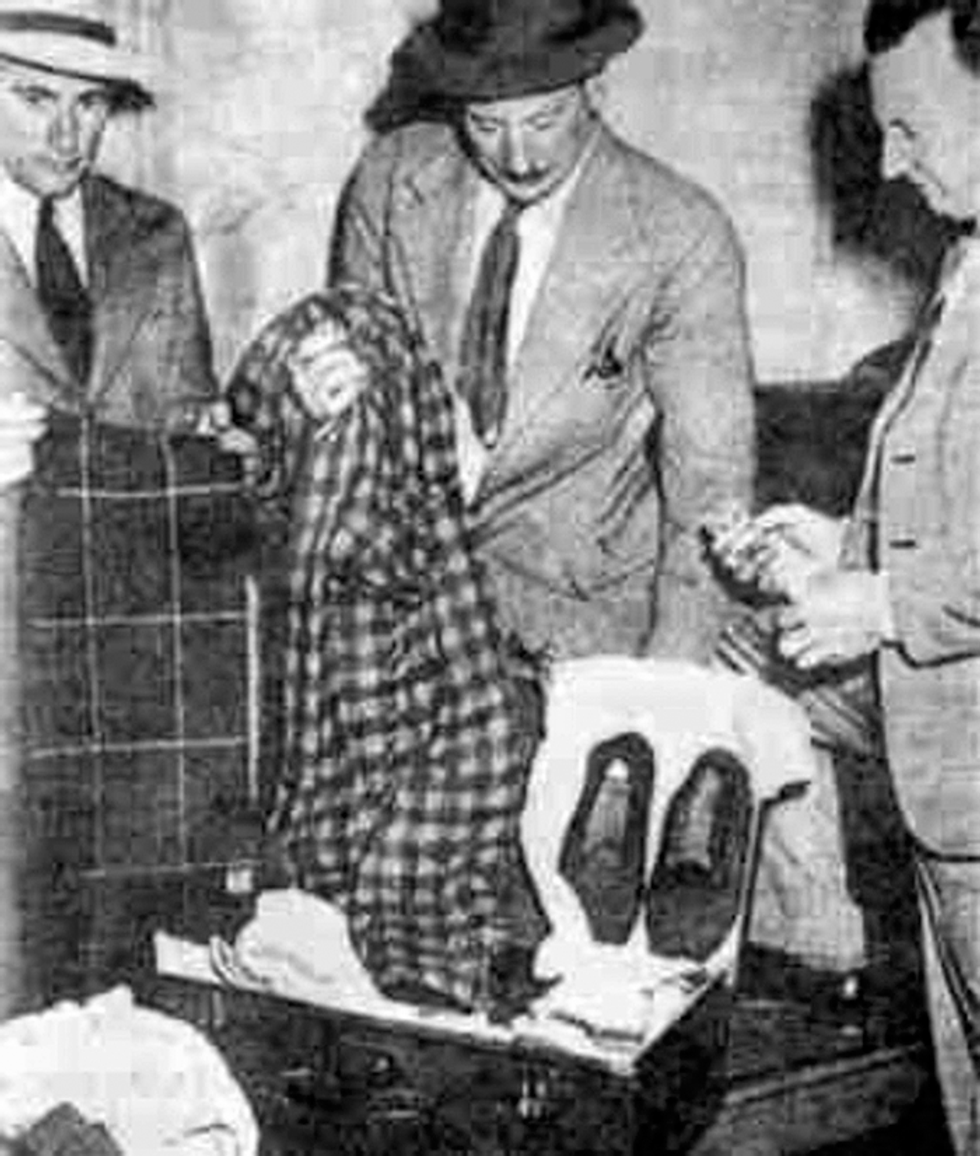 Policemen recovered the man's suitcase from the Adelaide city railway station and examined its contents.NEWS CORP./ALAMY
Policemen recovered the man's suitcase from the Adelaide city railway station and examined its contents.NEWS CORP./ALAMY
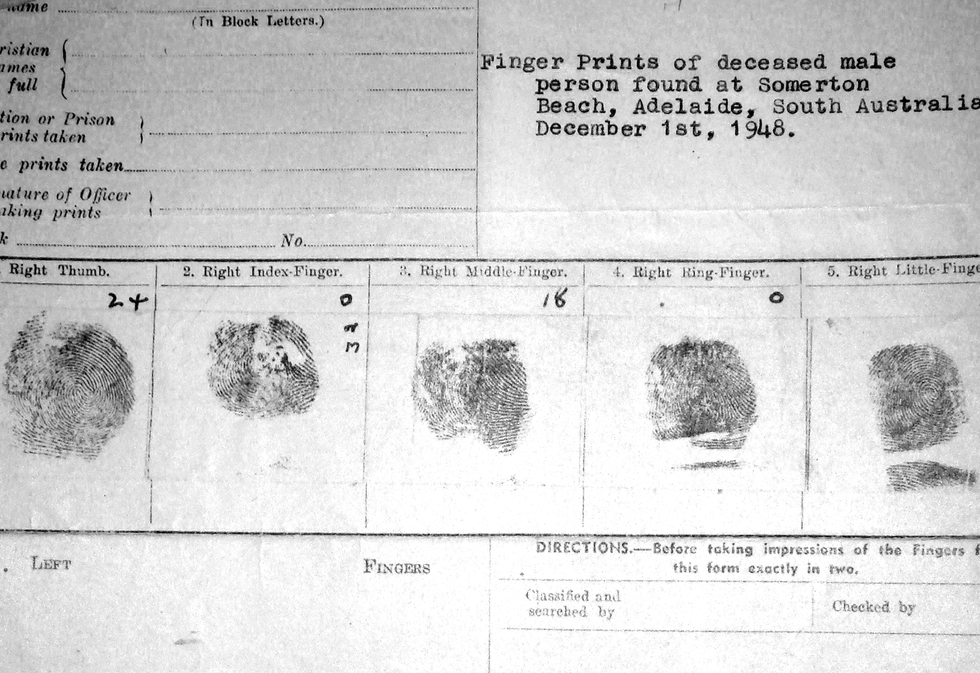 The man's fingerprints, taken after autopsy, were sent to the U.S. Federal Bureau of Investigation, which found no match.DEREK ABBOTT
The man's fingerprints, taken after autopsy, were sent to the U.S. Federal Bureau of Investigation, which found no match.DEREK ABBOTT
There was speculation of foul play. Perhaps the man was a spy who had come in from the cold; 1948 was the year after the Cold War got its name. This line of thought was strengthened, a few months later, by codelike writings in a book that came to be associated with the case.
These speculations aside, the idea that a person could simply die in plain view and without friends or family was shocking. This was a man with an athletic build, wearing a nice suit, and showing no signs of having suffered violence. The problem nagged many people over the years, and eventually it took hold of me. In the late 2000s, I began working on the Somerton Man mystery, devoting perhaps 10 hours a week to the research over the course of about 15 years.
Codes and CyphersThroughout my career, I have always been interested in cracking mysteries. My students and I used computational linguistics to identify which of the three authors of The Federalist Papers-Alexander Hamilton, James Madison, and John Jay-was responsible for any given essay. We tried using the same method to confirm authorship of Biblical passages. More recently, we've been throwing some natural-language processing techniques into an effort to decode the Voynich Manuscript, an early 15th-century document written in an unknown language and an unknown script. These other projects yield to one or another key method of inquiry. The Somerton Man problem posed a broader challenge.
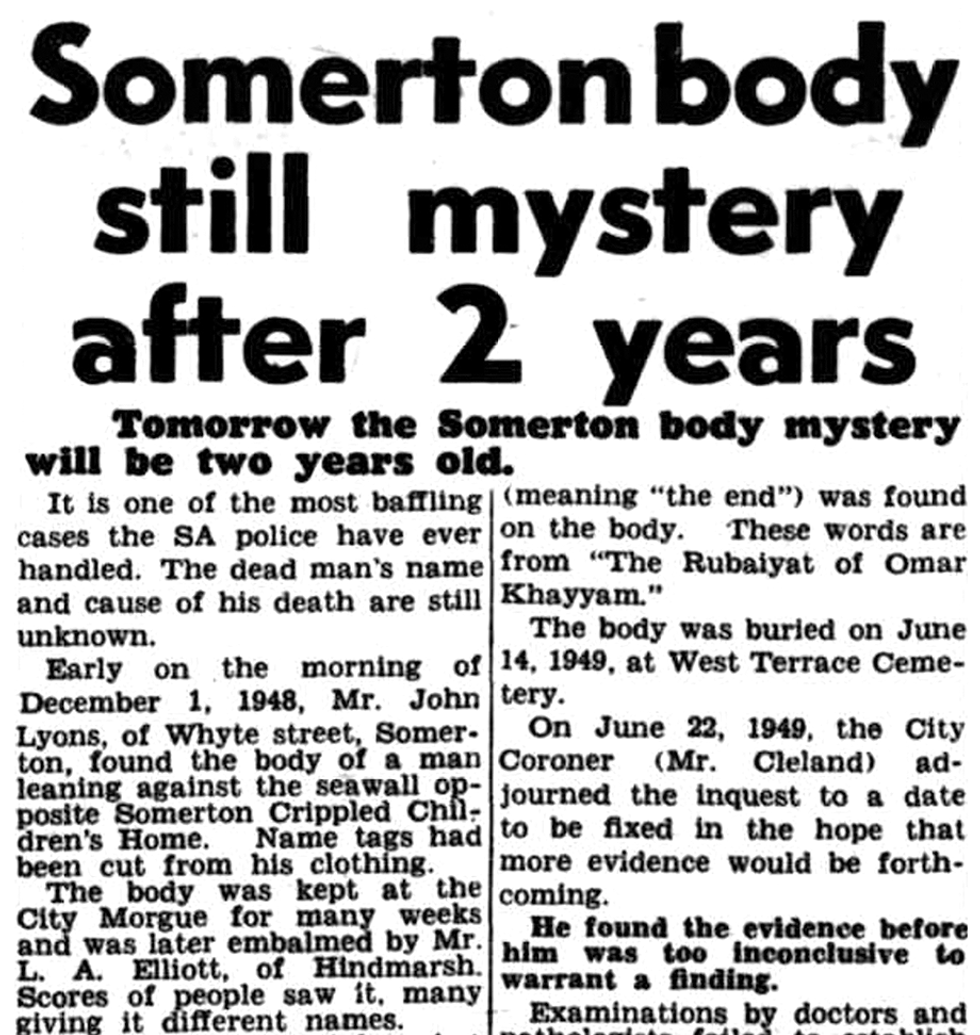
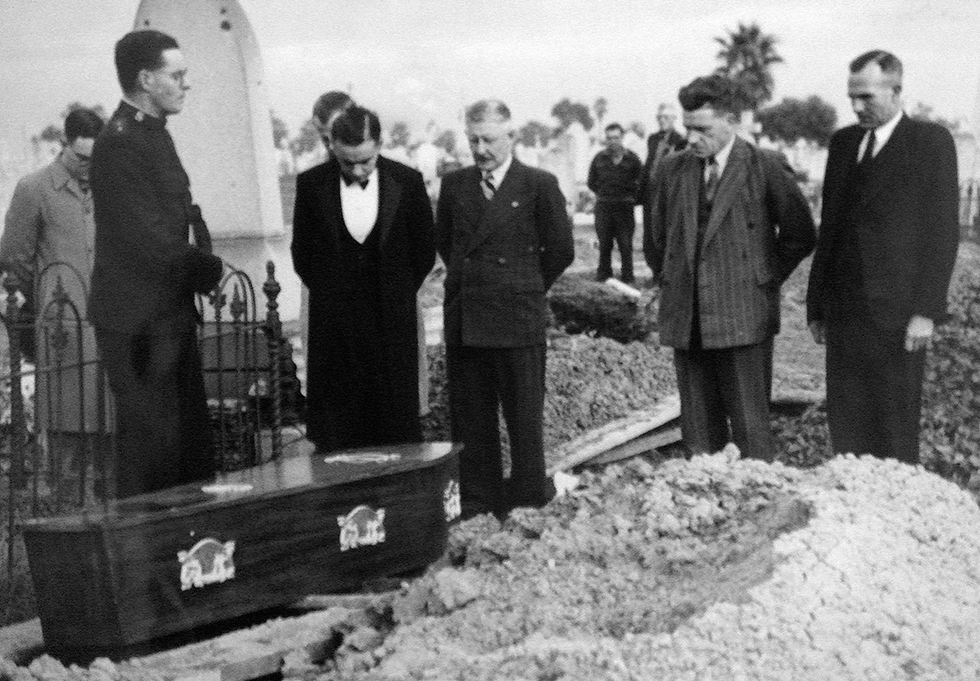
My one great advantage has been my access to students and to scientific instruments at the University of Adelaide, where I am a professor of electrical and electronic engineering. In 2009, I established a working group at the university's Center for Biomedical Engineering.
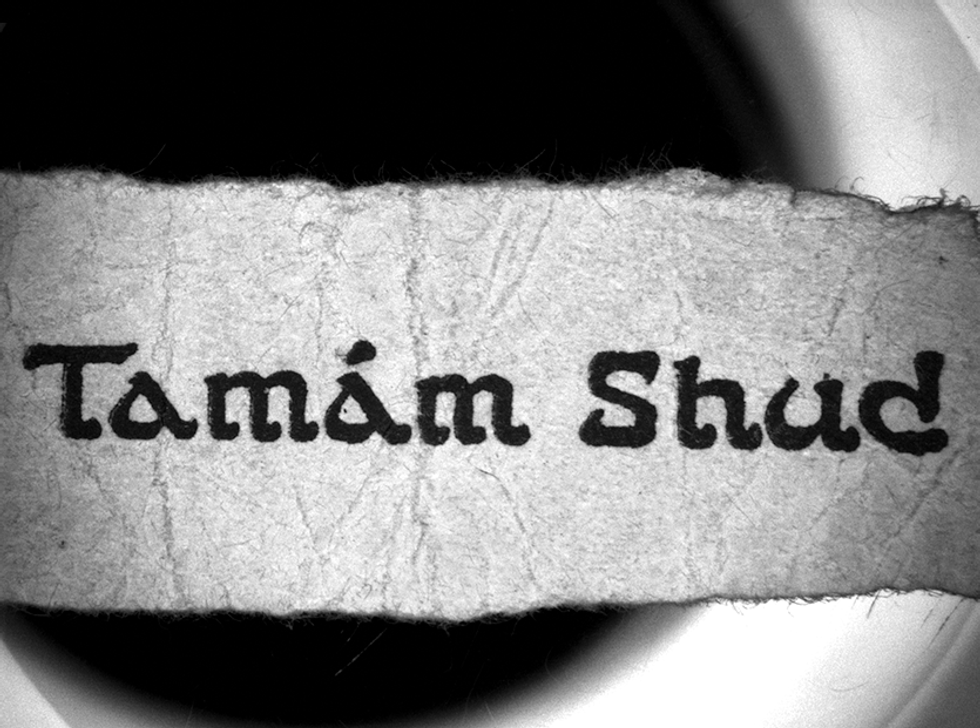
One question surrounding the Somerton Man had already been solved by sleuths of a more literary bent. In 1949, a pathologist had found a bit of paper concealed in one of the dead man's pockets, and on it were printed the words Tamam Shud, the Persian for finished." The phrase appears at the end of Edward FitzGerald's translation of the Rubaiyat of Omar Khayyam, a poem that remains popular to this day.
The police asked the public for copies of the book in which the final page had been torn out. A man found such a book in his car, where apparently it had been thrown in through an open window. The book proved a match.

The back cover of the book also included scribbled letters, which were at first thought to constitute an encrypted message. But statistical tests carried out by my team showed that it was more likely a string of the initial letters of words. Through computational techniques, we eliminated all of the cryptographic codes known in the 1940s, leaving as a remaining possibility a one-time pad, in which each letter is based on a secret source text. We ransacked the poem itself and other texts, including the Bible and the Talmud, but we never identified a plausible source text. It could have been a pedestrian aide-memoire-to list the names of horses in an upcoming race, for example. Moreover, our research indicates that it doesn't have the structural sophistication of a code. The Persian phrase could have been the man's farewell to the world: his suicide note.
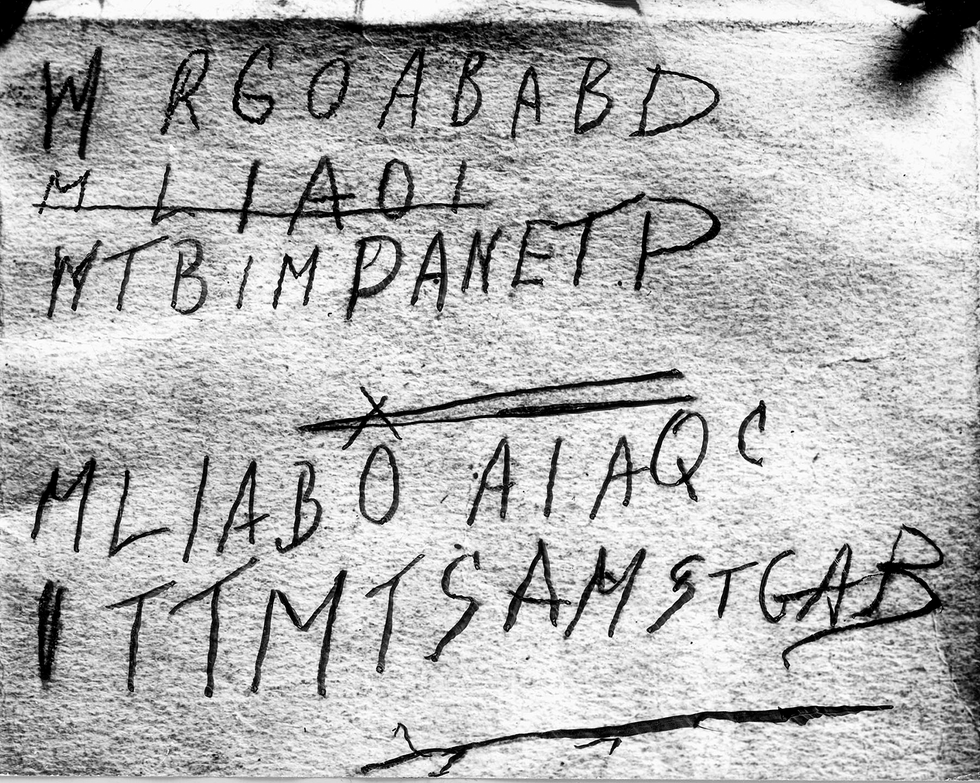
Also scribbled on the back cover was a telephone number that led to one Jo Thomson, a woman who lived merely a five-minute walk from where the Somerton Man had been found. Interviewers then and decades later reported that she had seemed evasive; after her death, some of her relatives and friends said they speculated that she must have known the dead man. I discovered a possible clue: Thomson's son was missing his lateral incisors, the two teeth that normally flank the central incisors. This condition, found in a very small percentage of the population, is often congenital; oddly, the Somerton Man had it, too. Were they related?
And yet the attempt to link Thomson to the body petered out. Early in the investigation, she told the police that she had given a copy of the Rubaiyat to a lieutenant in the Australian Army whom she had known during the war, and indeed, that man turned out to own a copy. But Thomson hadn't seen him since 1945, he was very much alive, and the last page of his copy was still intact. A trail to nowhere, one of many that were to follow.
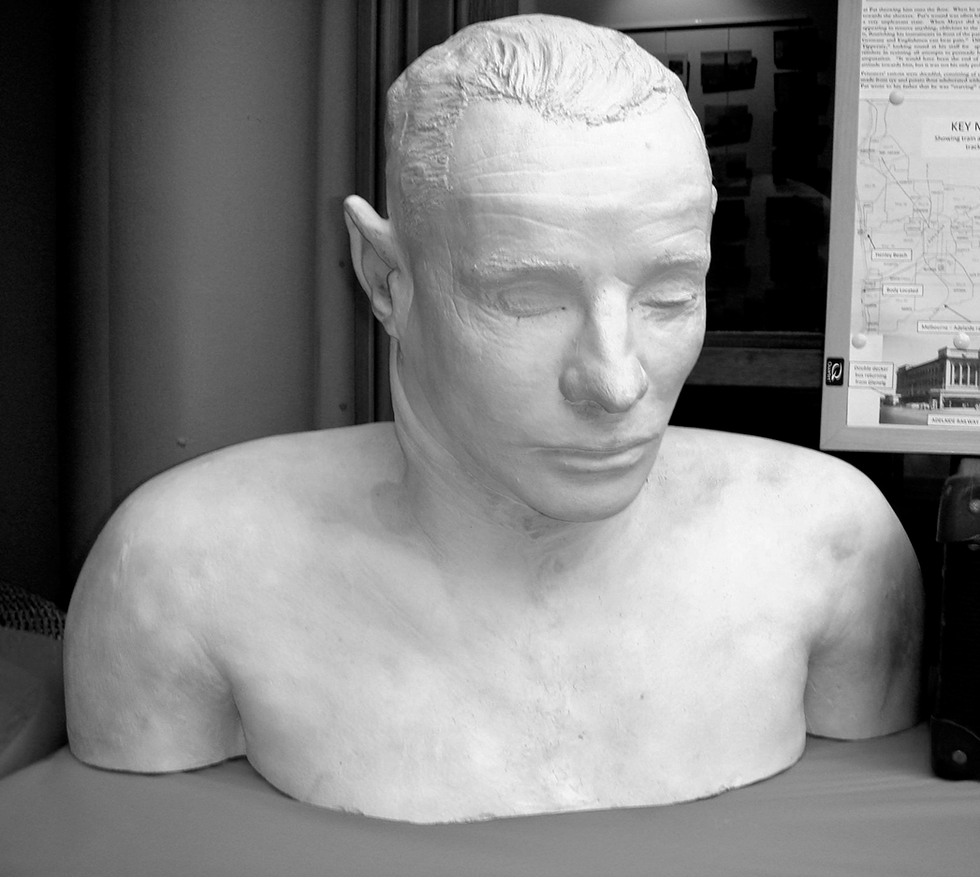
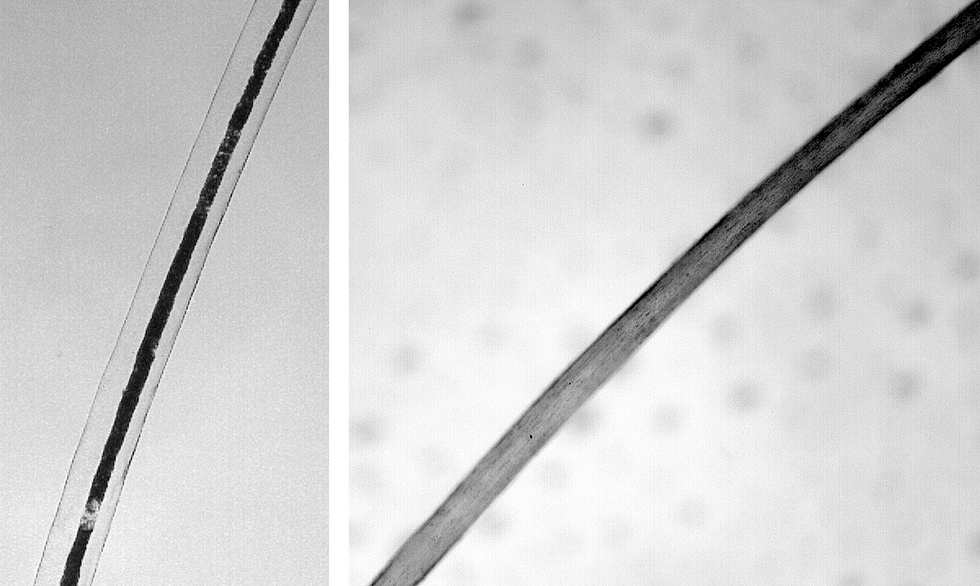
DNA from the Death Mask
We engineers in the 21st century had several other items to examine. First was a plaster death mask that had been made six months after the man died, during which time the face had flattened. We tried several methods to reconstruct its original appearance: In 2013 we commissioned a picture by Greg O'Leary, a professional portrait artist. Then, in 2020, we approached Daniel Voshart, who designs graphics for Star Trek movies. He used a suite of professional AI tools to create a lifelike reconstruction of the Somerton Man. Later, we obtained another reconstruction by Michael Streed, a U.S. police sketch artist. We published these images, together with many isolated facts about the body, the teeth, and the clothing, in the hope of garnering insights from the public. No luck.
As the death mask had been molded directly off the Somerton Man's head, neck, and upper body, some of the man's hair was embedded in the plaster of Paris-a potential DNA gold mine. At the University of Adelaide, I had the assistance of a hair forensics expert, Janette Edson. In 2012, with the permission of the police, Janette used a magnifying glass to find where several hairs came together in a cluster. She was then able to pull out single strands without breaking them or damaging the plaster matrix. She thus secured the soft, spongy hair roots as well as several lengths of hair shaft. The received wisdom of forensic science at the time held that the hair shaft would be useless for DNA analysis without the hair root.
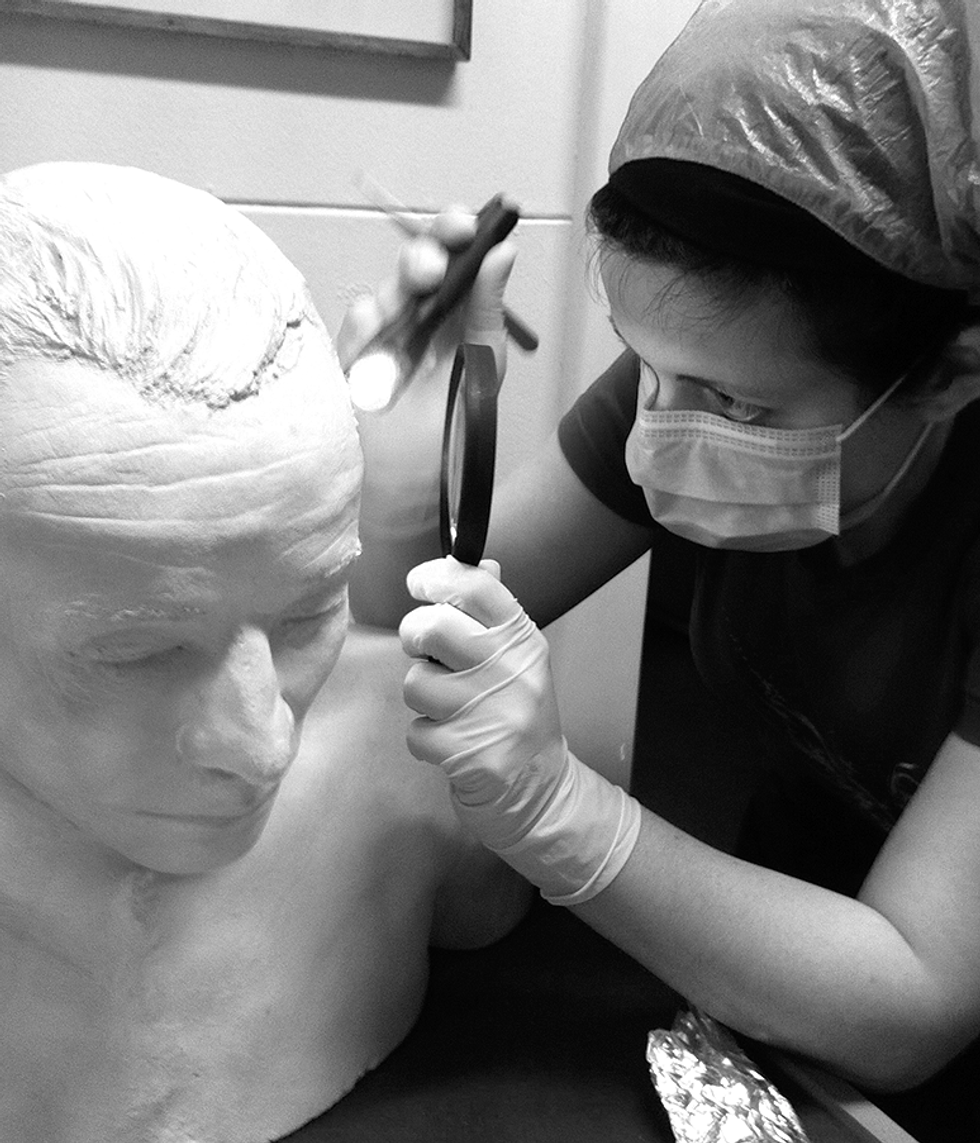
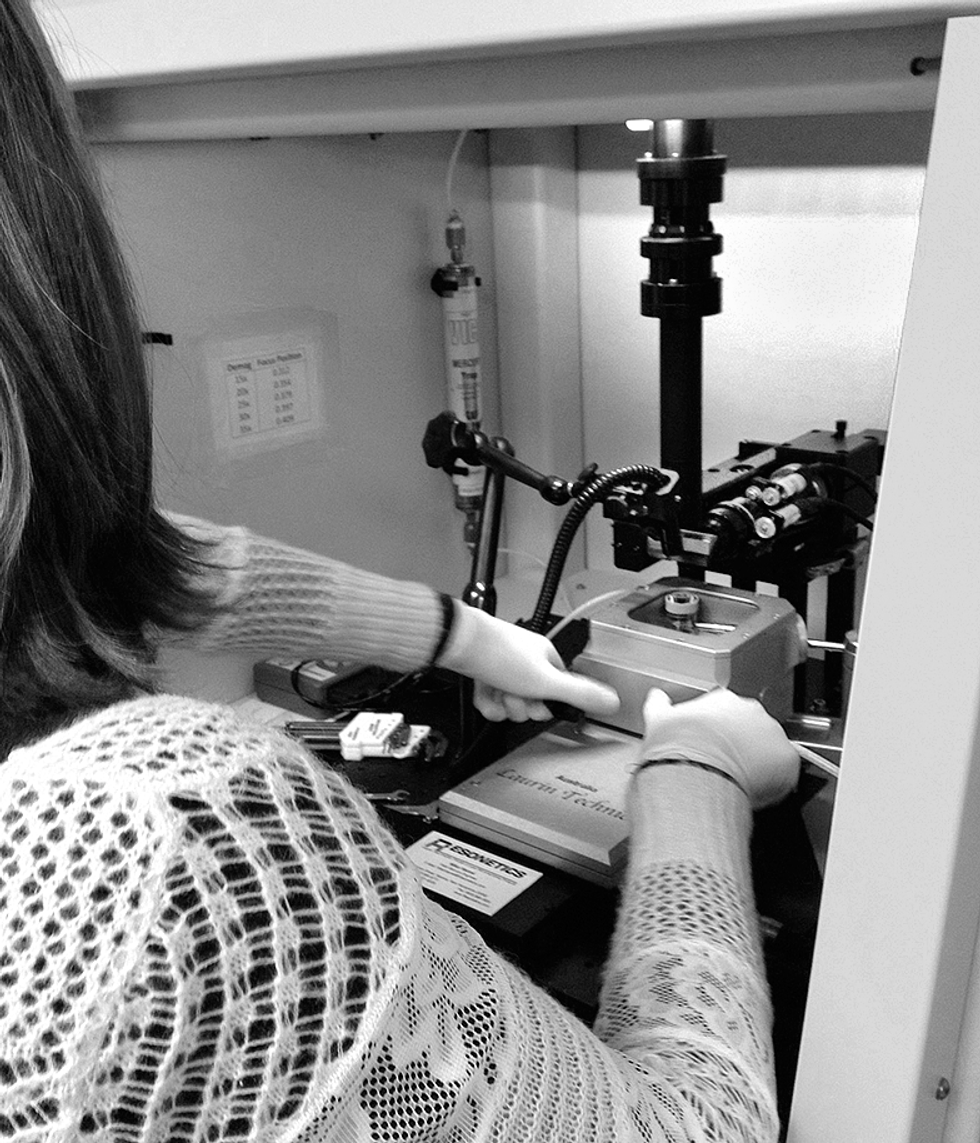
Janette performed our first DNA analysis in 2015 and, from the hair root, was able to place the sample within a maternal genetic lineage, or haplotype, known as H," which is widely spread around Europe. (Such maternally inherited DNA comes not from the nucleus of a cell but from the mitochondria.) The test therefore told us little we hadn't already known. The concentration of DNA was far too low for the technology of the time to piece together the sequencing we needed.
Fortunately, sequencing tools continued to improve. In 2018, Guanchen Li and Jeremy Austin, also at the University of Adelaide, obtained the entire mitochondrial genome from hair-root material and narrowed down the maternal haplotype to H4a1a1a.
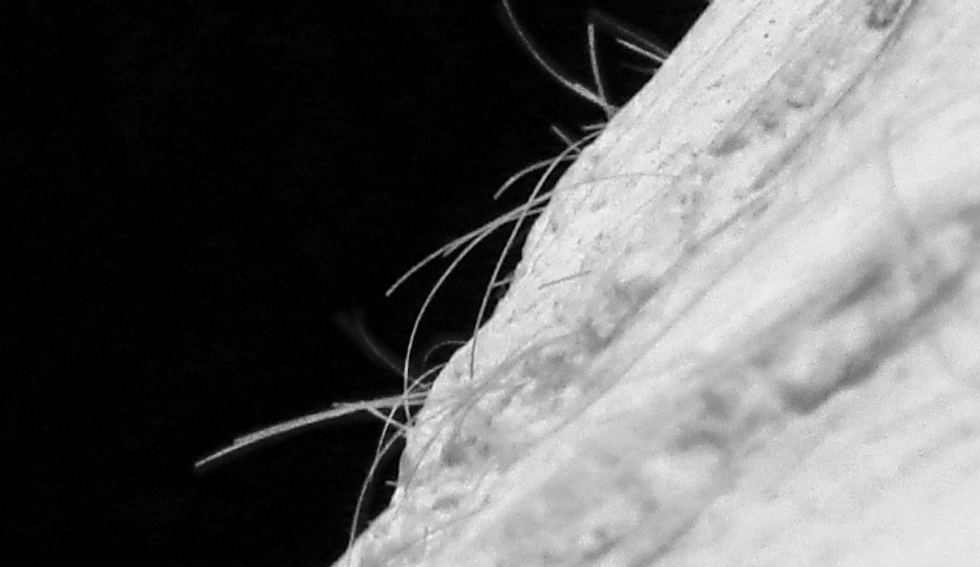
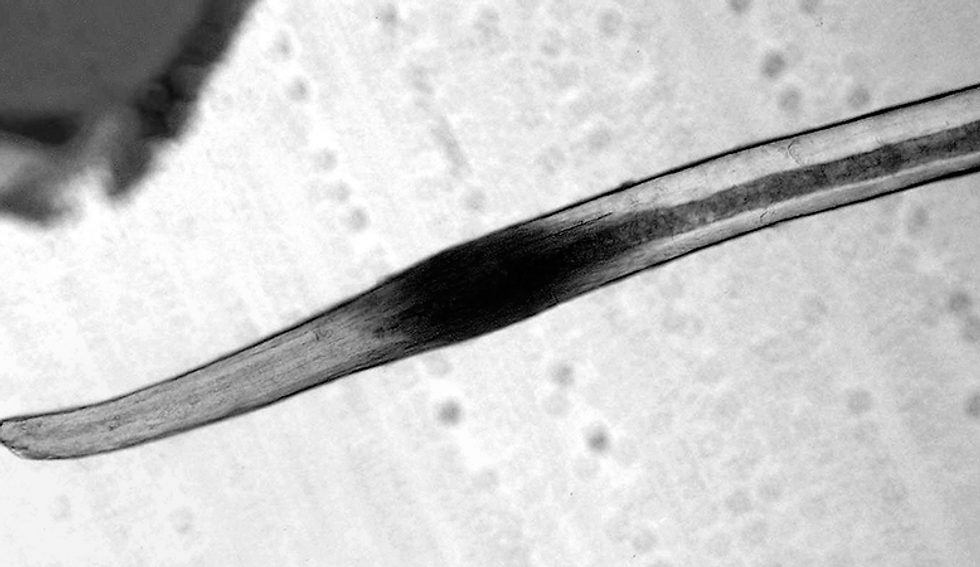
However, to identify Somerton Man using DNA databases, we needed to go to autosomal DNA-the kind that is inherited from both parents. There are more than 20 such databases, 23andMe and Ancestry being the largest. These databases require sequences of from 500,000 to 2,000,000 single nucleotide polymorphisms, or SNPs (pronounced snips"). The concentration levels of autosomes in the human cell tend to be much lower than those of the mitochondria, and so Li and Austin were able to obtain only 50,000 SNPs, of which 16,000 were usable. This was a breakthrough, but it still wasn't good enough to work on a database.
In 2022, at the suggestion of Colleen Fitzpatrick, a former NASA employee who had trained as a nuclear physicist but then became a forensic genetics expert, I sent a hair sample to Astrea Forensics, a DNA lab in the United States. This was our best hair-root sample, one that I had nervously guarded for 10 years. The result from Astrea came back-and it was a big flop.
Seemingly out of options, we tried a desperate move. We asked Astrea to analyze a 5-centimeter-long shaft of hair that had no root at all. Bang! The company retrieved 2 million SNPs. The identity of the Somerton Man was now within our reach.
So why did the rootless shaft work in our case?
The DNA analysis that police use for standard crime-solving relies on only 20 to 25 short tandem repeats (STRs) of DNA. That's fine for police, who mostly do one-to-one matches to determine whether the DNA recovered at a crime scene matches a suspect's DNA.
But finding distant cousins of the Somerton Man on genealogical databases constitutes a one-to-many search, and for that you typically need around 500,000 markers. For these genealogical searches, SNPs are used because they contain information on ethnicity and ancestry generally. Note that SNPs have around 50 to 150 base pairs of nucleotides, whereas typical STRs tend to be longer, containing 80 to 450 base pairs. The hair shaft contains DNA that is mostly fragmented, so it's of little use when you're seeking longer STR segments but it's a great source of SNPs. So this is why crime forensics traditionally focused on the root and ignored the shaft, although this practice is now changing very slowly.
Another reason the shaft was such a trove of DNA is that keratin, its principal component, is a very tough protein, and it had protected the DNA fragments lodged within it. The 74-year-old soft spongy hair root, on the other hand, had not protected the DNA to the same extent. We set a world record for obtaining a human identification, using forensic genealogy, from the oldest piece of hair shaft. Several police departments in the United States now use hair shafts to retrieve DNA, as I am sure many will start to do in other countries, following our example.
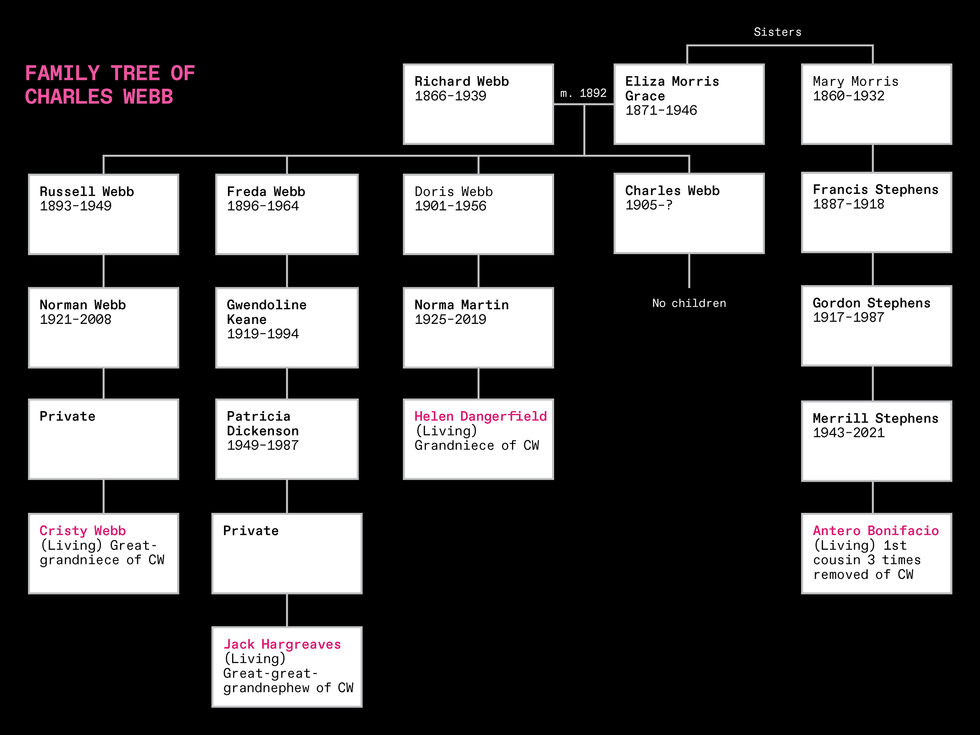
Libraries of SNPs can be used to untangle the branching lines of descent in a family tree. We uploaded our 2 million SNPs to GEDmatch Pro, an online genealogical database located in Lake Worth, Fla. (and recently acquired by Qiagen, a biotech company based in the Netherlands). The closest match was a rather distant relative based in Victoria, Australia. Together with Colleen Fitzpatrick, I built out a family tree containing more than 4,000 people. On that tree we found a Charles Webb, son of a baker, born in 1905 in Melbourne, with no date of death recorded.
Charles never had children of his own, but he had five siblings, and I was able to locate some of their living descendants. Their DNA was a dead match. I also found a descendant of one of his maternal aunts, who agreed to undergo a test. When a positive result came through on 22 July 2022, we had all the evidence we needed. This was our champagne moment.
Reconstructing Somerton Man's LifeIn late 2021, police in South Australia ordered an exhumation of the Somerton Man's body for a thorough analysis of its DNA. At the time we prepared this article, they had not yet confirmed our result, but they did announce that they were cautiously optimistic" about it.
All at once, we were able to fill in a lot of blank spaces. Webb was born on 16 November 1905, in Footscray, a suburb of Melbourne, and educated at a technical college, now Swinburne University of Technology. He later worked as an electrical technician at a factory that made electric hand drills. Our DNA tests confirmed he was not related to Thomson's son, despite the coincidence of their missing lateral incisors.
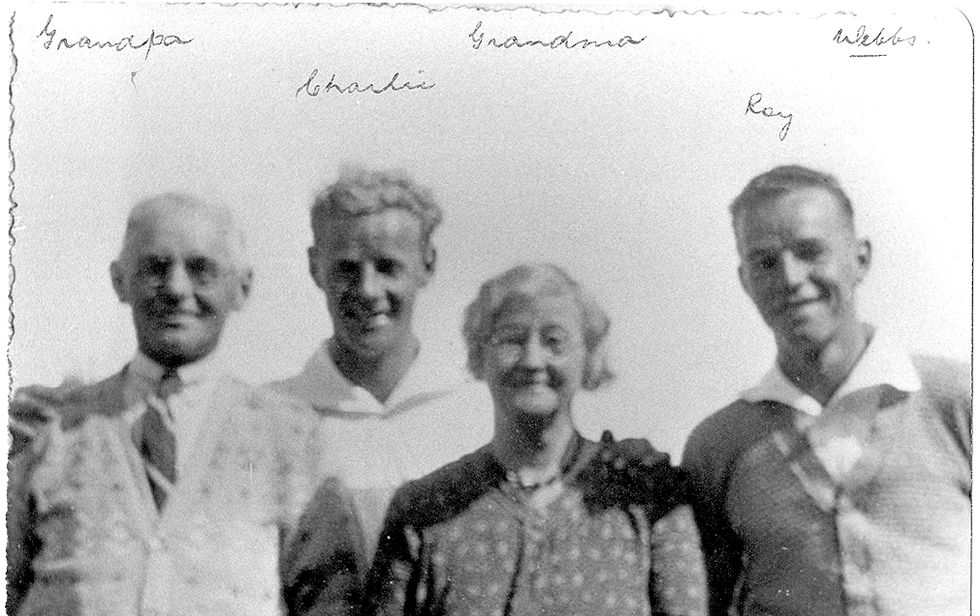
We discovered that Webb had married a woman named Dorothy Robertson in 1941 and had separated from her in 1947. She filed for divorce on grounds of desertion, and the divorce lawyers visited his former place of work, confirming that he had quit around 1947 or 1948. But they could not determine what happened to him after that. The divorce finally came through in 1952; in those days, divorces in Australia were granted only five years after separation.
At the time of Webb's death his family had become quite fragmented. His parents were dead, a brother and a nephew had died in the war, and his eldest brother was ill. One of his sisters died in 1955 and left him money in her will, mistakenly thinking he was still alive and living in another state. The lawyers administering the will were unable to locate Charles.

We got more than DNA from the hair: We also vaporized a strand of hair by scanning a laser along its length, a technique known as laser ablation. By performing mass spectrometry on the vapor, we were able to track Webb's varying exposure to lead. A month before Webb's death, his lead level was high, perhaps because he had been working with the metal, maybe soldering with it. Over the next month's worth of hair growth, the lead concentration declined; it reached its lowest level at his death. This might be a sign that he had moved.
With a trove of photographs from family albums and other sources, we were able to compare the face of the young Webb with the artists' reconstructions we had commissioned in 2013 and 2021 and the AI reconstruction we had commissioned in 2020. Interestingly, the AI reconstruction had best captured his likeness.

A group photograph, taken in 1921, of the Swinburne College football team, included a young Webb. Clues found in newspapers show that he continued to participate in various sports, which would explain the athletic condition of his body.
An Engineering Approach Paid OffWhat's interesting about solving such a case is how it relies on concepts that may seem counterintuitive to forensic biologists but are quite straightforward to an electronics engineer. For example, when dealing with a standard crime scene that uses only two dozen STR markers, one observes very strict protocols to ensure the integrity of the full set of STRs. When dealing with a case with 2 million SNPs, by contrast, things are more relaxed. Many of the old-school STR protocols don't apply when you have access to a lot of information. Many SNPs can drop out, some can even be noise," the signal may not be clean-and yet you can still crack the case!
Engineers understand this concept well. It's what we call graceful degradation-when, say, a few flipped bits on a digital video signal are hardly noticed. The same is true for a large SNP file.
And so, when Astrea retrieved the 2 million SNPs, the company didn't rely on the traditional framework for DNA-sequencing reads. It used a completely different mathematical framework, called imputation. The concept of imputation is not yet fully appreciated by forensics experts who have a biological background. However, for an electronics engineer, the concept is similar to error correction: We infer and impute" bits of information that have dropped out of a received digital signal. Such an approach is not possible with a few STRs, but when handling over a million SNPs, it's a different ball game.
Much of the work on identifying Charles Webb from his genealogy had to be done manually because there are simply no automated tools for the task. As an electronics engineer, I now see possible ways to make tools that would speed up the process. One such tool my team has been working on, together with Colleen Fitzpatrick, is software that can input an entire family tree and represent all of the birth locations as colored dots on Google Earth. This helps to visualize geolocation when dealing with a large and complex family.
The Somerton Man case still has its mysteries. We cannot yet determine where Webb lived in his final weeks or what he was doing. Although the literary clue he left in his pocket was probably an elliptical suicide note, we cannot confirm the exact cause of death. There is still room for research; there is much we do not know.
This article appears in the April 2023 print issue as Finding Somerton Man."